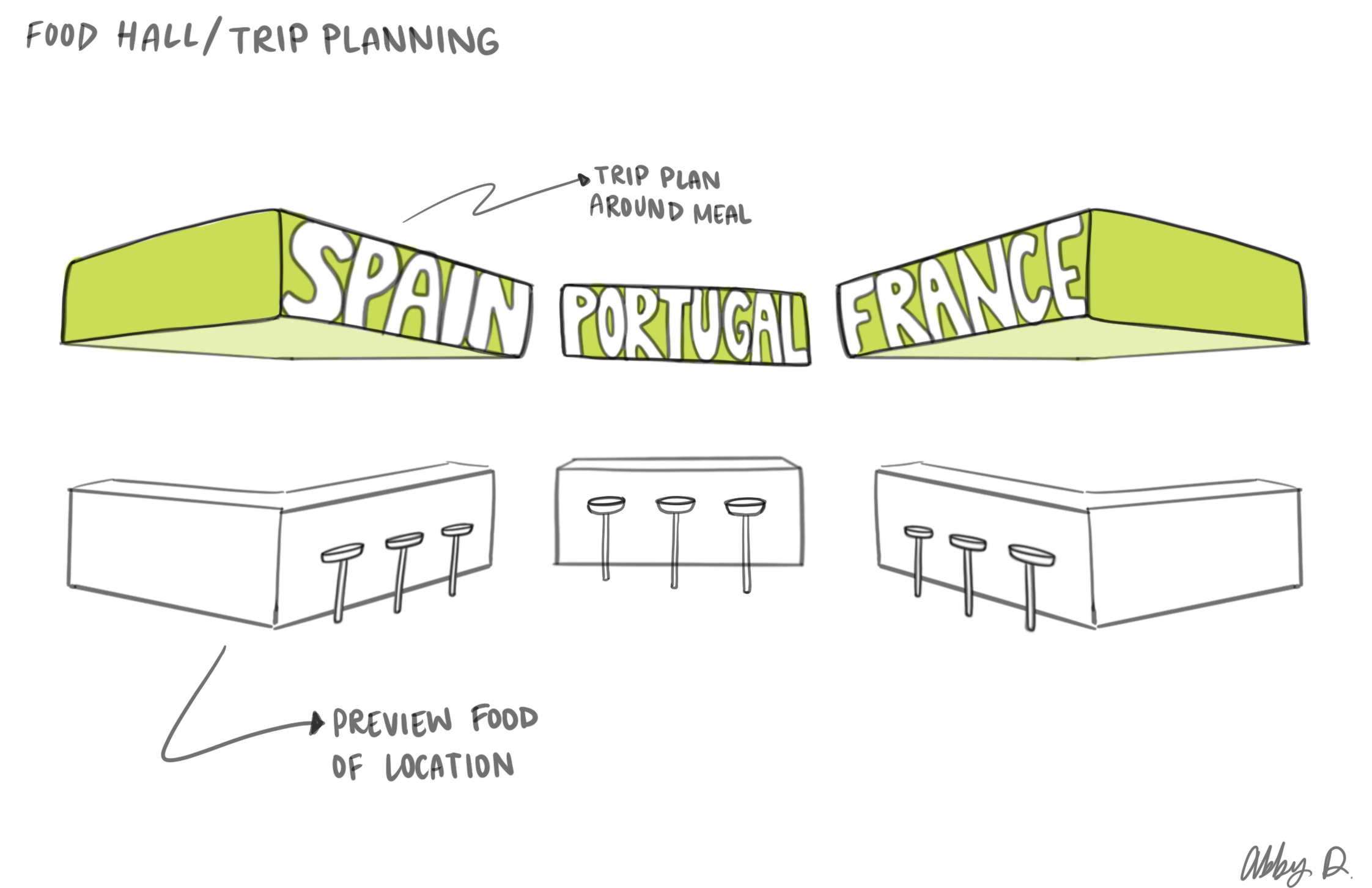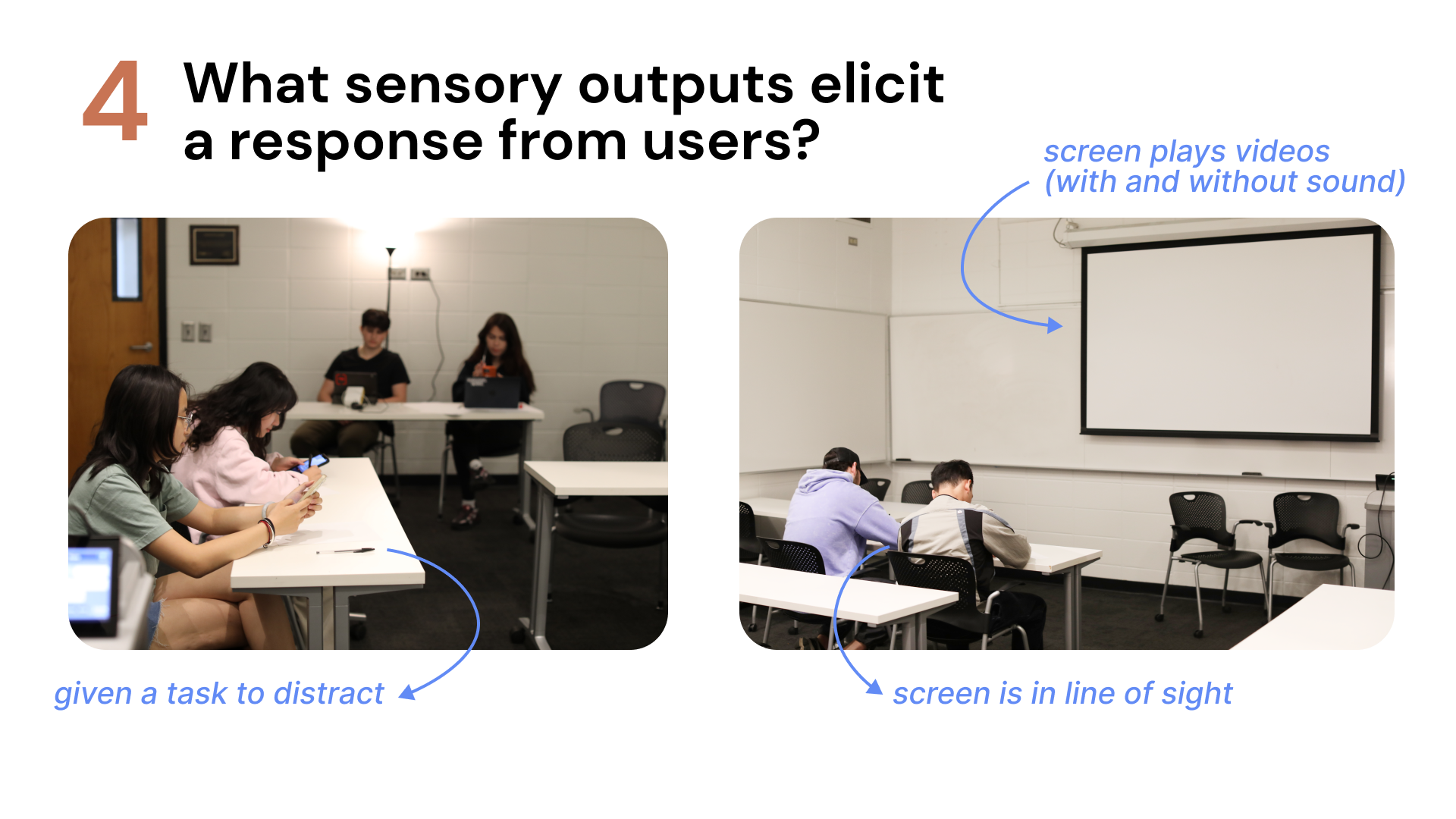
What is Rail Explorer?
Rail Explorer is an interactive planning system integrated into commuter trains designed to encourage riders to explore local destinations and book future excursions. The concept is centered around transforming the user from commuter to explorer. The system features a main cabin on the train where one can investigate destinations along the route and in one’s own community, and a planning hub in the station where one can book and save selected experiences. A personalized key fob provides access to the planning hub and main cabin, and is used to save transit tickets, book experiences, and provide information about destinations near you.
Rail Explorer is an interactive planning system integrated into commuter trains designed to encourage riders to explore local destinations and book future excursions. The concept is centered around transforming the user from commuter to explorer. The system features a main cabin on the train where one can investigate destinations along the route and in one’s own community, and a planning hub in the station where one can book and save selected experiences. A personalized key fob provides access to the planning hub and main cabin, and is used to save transit tickets, book experiences, and provide information about destinations near you.
Tags: UX Design, Interaction Design, User Research
Timeline: Feb 2023 - May 2023
My role: Experience Designer - Team Project
Timeline: Feb 2023 - May 2023
My role: Experience Designer - Team Project
The Opportunity:
How might we cultivate a love for travel by bringing the thrill of discovery to people's own neighborhoods?
How might we cultivate a love for travel by bringing the thrill of discovery to people's own neighborhoods?
There is a strong opportunity to cultivate train travel...
We researched our users and understood their needs:
Of the 20+ people we interviewed, >90% talked favorably about train travel and/or expressed the desire for train travel to be more common in the US.
Of the 20+ people we interviewed, >90% talked favorably about train travel and/or expressed the desire for train travel to be more common in the US.


Our research led us to 3 main insights:
1. There are multiple points of friction in the transit planning and booking process.
2. People who regularly interact with travel-related media tend to frequently think about and take action to travel.
3. Consumers are increasingly conscientious of the impacts of their travel.
2. People who regularly interact with travel-related media tend to frequently think about and take action to travel.
3. Consumers are increasingly conscientious of the impacts of their travel.
We visualized the opportunities...





The team visualized the opportunities and brainstormed ideas about brand partnerships, the connection between travel and food, and group planning. This led to an idea centered around the transformation from commuter to explorer.
After much discussion, we came to a conclusion:
We must approach this concept with equity, sustainability, and inclusivity at the center.
And the result was the first concept of Rail Explorer:

Centered around transforming the choice transit rider to explorer, the team created an aspirational journey map for new explorers and visualized their environment.



We chose to narrow our focus to 4 elements as our original concept had too many components...
1. Planning Hub
2. Physical Artifact
3. App
4. On-train Experience

We conducted focused user testing of our concept and asked questions that informed each of the four elements.








...and resulted in 3 primary findings:

How did we implement these findings into our design?
- We didn’t want to compete with phones for people’s attention: users only use the physical artifact to save experiences they’re interested in.
- The main cabin has one experience being shown to users at a time, the other cabins on the train passively show nearby events and experiences via a transparent display on the windows.
- The planning hubs in the stations include privacy barriers and a table.
- The app is used to connect the experiences.
Which led us to our final concept:
Catch a glimpse of what the Rail Explorer experience looks like for a daily commuter.
Rail Explorer is an ecosystem with 3 main components: The Fob, Planning Hub, and Main Cabin



The Fob
The Key Fob provides visual representation of previous adventures and helps to promote train travel pride.




The tap interaction is consistent at every point in the ecosystem: from the user’s train ticket, to booking trips in the planning hub, and saving experiences when the user is on the train.
Planning Hub
Planning hubs are located throughout the lobby of the station.

Glass barriers are transparent until planning is initiated.

Glass barriers turn opaque and users are shown adventure possibilities.
Main Cabin

There is a seamless transition between the platform and the main cabin, drawing the user in.

A large display shows nearby locations accessible by train.

Users tap interaction points on stanchions to save experiences.




The stanchions feature tap icons indicating to users how to save an experience.

